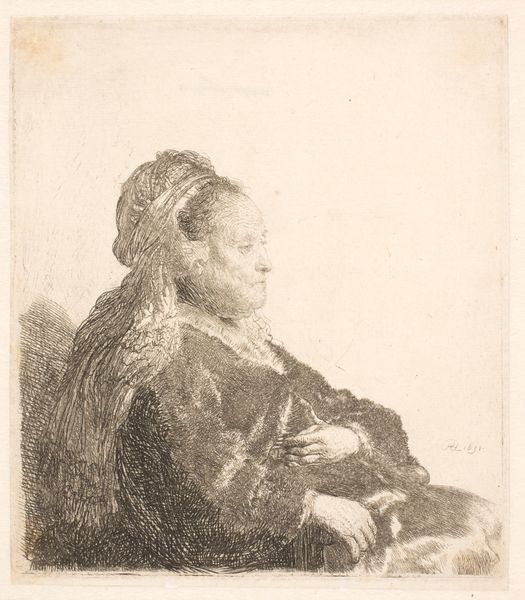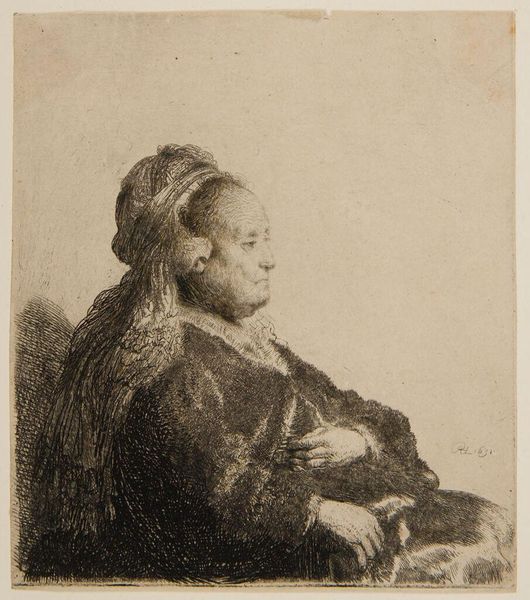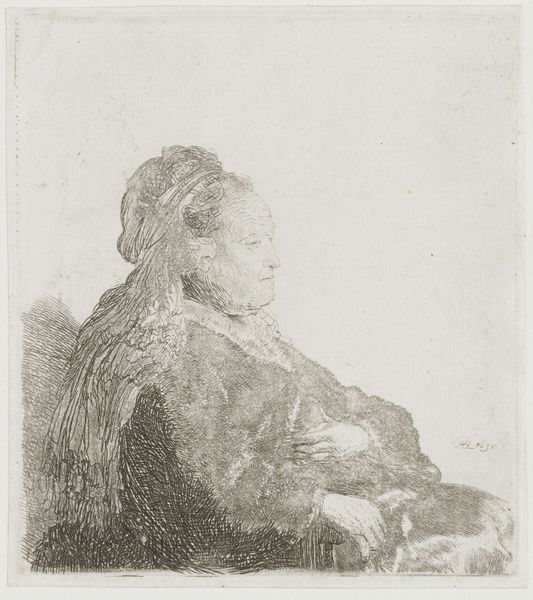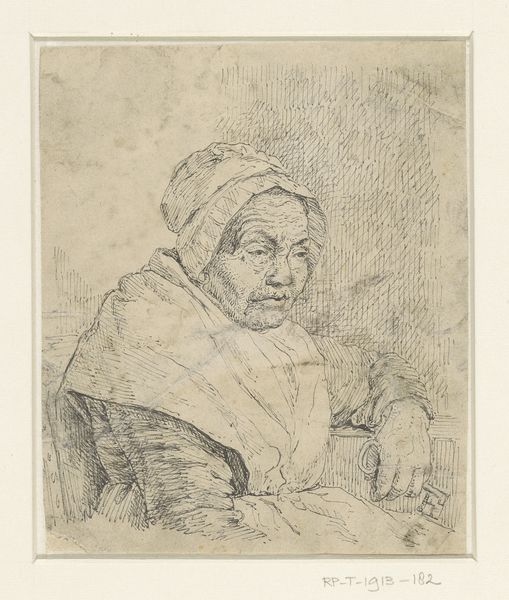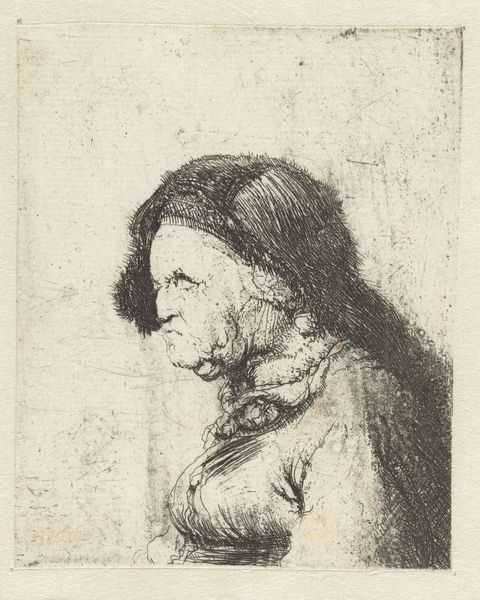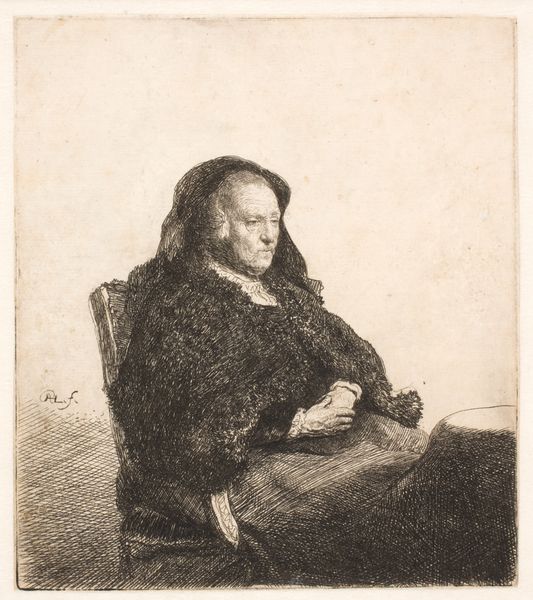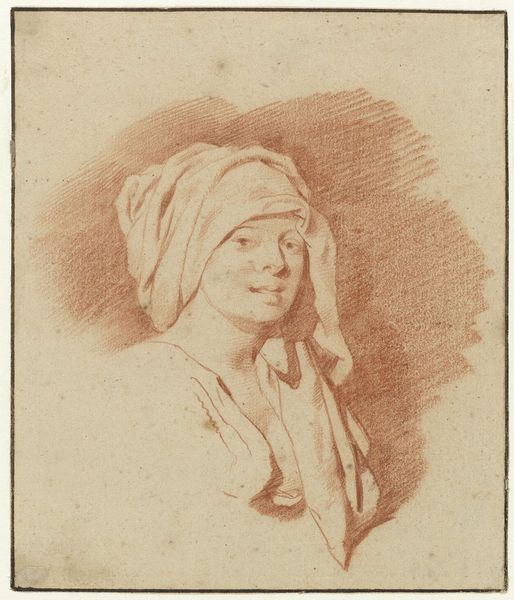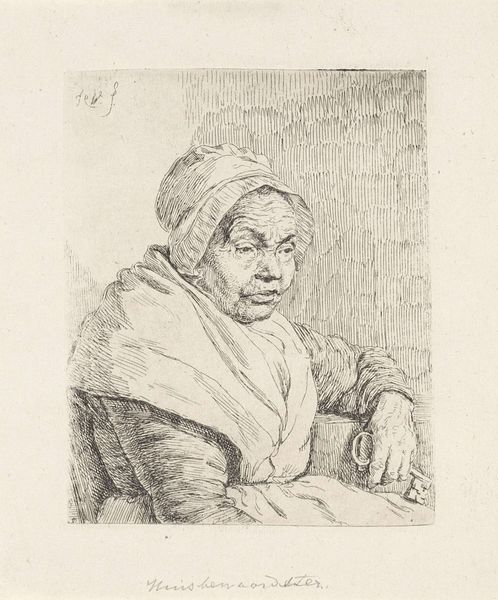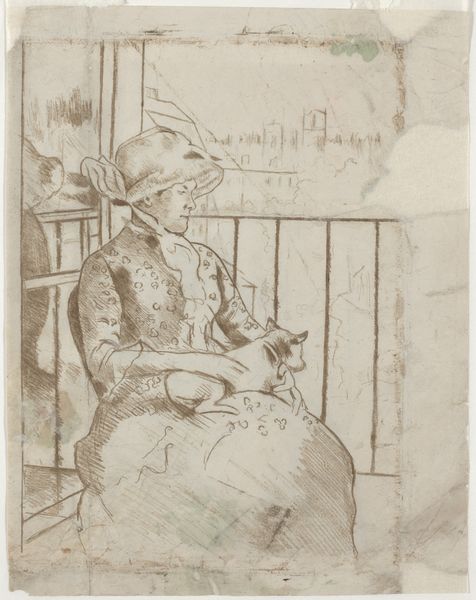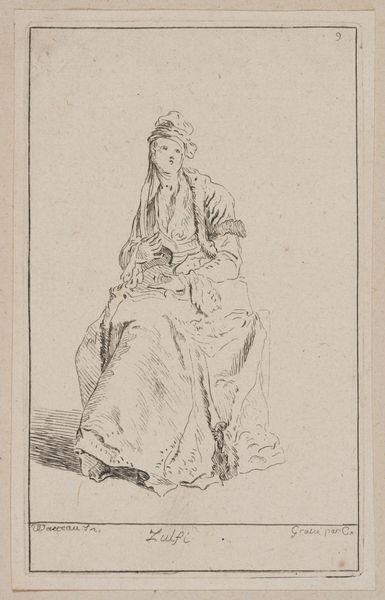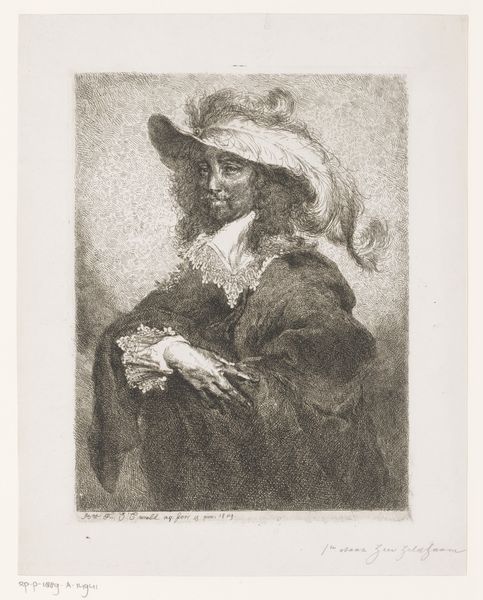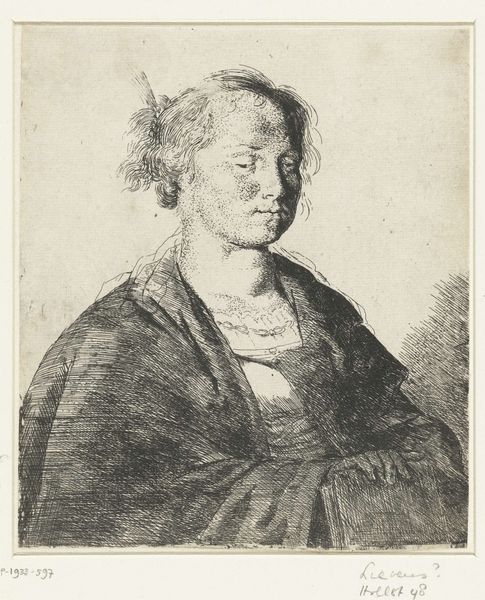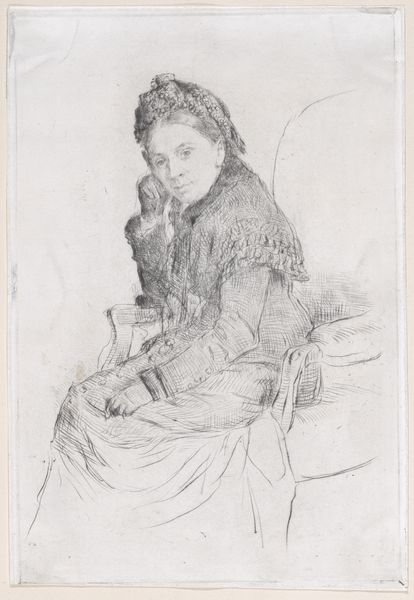
drawing, print, etching
#
portrait
#
drawing
#
self-portrait
#
baroque
#
dutch-golden-age
# print
#
etching
#
pencil drawing
#
portrait drawing
Copyright: National Gallery of Art: CC0 1.0
Curator: Here we have Rembrandt van Rijn's etching, "The Artist's Mother Seated, in an Oriental Headdress," from 1631. Editor: It has such an intimate feel. There's a quiet dignity to the way her gaze is directed, almost melancholic. I also like the texture in the details, like in her fur robe. Curator: Absolutely. The material presence is really what drew me in too. Consider the process: etching relies on the corrosion of a metal plate with acid to create an image. Rembrandt manipulated this process expertly, creating different textures with the fur and face, building it up layer by layer. The paper substrate and ink also add to the unique object quality. Editor: Right, and in portraying his mother, Neeltgen Willemsdr van Zuytbroeck, this piece tells us something about familial roles and representation in 17th-century Dutch society. The ‘oriental’ headdress, while not entirely accurate in its depiction, invites us to question European perspectives on the “exotic” and the construction of identity during that time. Curator: Exactly. Where did Rembrandt source the materials for this 'oriental' headdress? Was this actual garb his mother donned, or just an artistic tool? These questions delve into artistic creation’s complex relationship to production and material culture. And who owned prints like these? Were they mostly enjoyed by middle-class merchants? The art market shaped the creation process too, as it affected subject and format choices to accommodate specific taste preferences and printing capacity. Editor: Also, there's a kind of staged quality to the composition. The headdress positions her, perhaps problematically, within a broader conversation of cultural appropriation and the Western gaze. This makes us consider power dynamics in portraiture: who gets to represent whom, and on what terms? How complicit are artworks in either resisting or furthering the biased representation of specific social groups and norms? Curator: A powerful reminder that what seems intimate can also reveal systemic imbalances when put into social perspective. Understanding the work means scrutinizing the economic and material conditions, including its position as a commodity within the Dutch Golden Age art market. Editor: Indeed. It urges us to consider both its formal artistic elements and broader sociocultural implications, provoking nuanced discussion. Curator: Well, thinking about process and consumption of material objects and techniques surely shifts your perception, wouldn’t you agree? Editor: Yes, it allows you to view it from different perspectives. It has given me much to ponder about representation, too. Thank you!
Comments
No comments
Be the first to comment and join the conversation on the ultimate creative platform.
